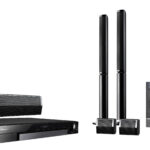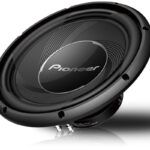To test a subwoofer without a multimeter, you can use a tone generator and an audio amplifier. By connecting the subwoofer to the audio amplifier and generating a test tone, you can listen for any distortion or irregularities in the output of the subwoofer.
This method allows you to assess the performance of the subwoofer without the need for a multimeter. Subwoofers are an essential component of audio systems, responsible for producing low-frequency sounds and enhancing the overall audio experience. However, it’s important to regularly check your subwoofer to ensure it is functioning properly.
Typically, a multimeter is used to measure electrical properties such as resistance and voltage. But if you don’t have a multimeter available, there are alternative methods to test your subwoofer. We will explain how to test a subwoofer without a multimeter using a tone generator and an audio amplifier.

Understanding The Basics Of Subwoofer Testing
Understanding the Basics of Subwoofer Testing
It is important to test a subwoofer to ensure optimal performance and identify any potential issues. Testing a subwoofer without a multimeter is possible using various methods. While a multimeter offers accurate readings, alternative techniques can also be effective.
Importance of Testing a Subwoofer
Testing a subwoofer allows you to gauge its performance, ensuring it produces the desired bass levels. It helps identify common issues such as distorted or weak sound, rattling noises, or complete audio failure. By testing, you can troubleshoot and find solutions to these problems.
Common Issues with Subwoofers
| Common Issues | Possible Causes |
|---|---|
| Distorted sound | Overpowering the subwoofer, incorrect wiring, or damaged speaker cone |
| Rattling noises | Loose screws, cabinet resonance, or damaged voice coil |
| No audio output | Incorrect connections, blown fuse, or faulty amplifier |
Different Ways to Test a Subwoofer without a Multimeter
- Listening Test: Assess the subwoofer’s sound quality by playing various frequencies and listening for distortions or any anomalies.
- Visual Inspection: Examine the subwoofer for physical damage, loose connections, or signs of wear and tear.
- Substitution Method: Swap the subwoofer with a known working unit to determine if the issue lies with the subwoofer itself.
- Volume Test: Gradually increase the volume to check for any abnormal sounds or performance issues.
Testing The Audio Output
Testing the audio output of a subwoofer without a multimeter can be done by checking for proper connection and using an audio signal generator. Firstly, ensure that all cables are securely connected to the subwoofer and the audio source. If the connections appear to be fine, proceed with using an audio signal generator to send a test signal to the subwoofer.
Start by playing a known audio track and listen carefully for any distorted or abnormal sound. Distortion can be a sign of a faulty subwoofer or incorrect audio settings. Adjust the volume and equalizer settings if necessary to ensure optimal sound quality.
Regularly testing your subwoofer is essential to maintain high audio performance. By following these steps and closely monitoring the audio output, you can identify any issues and take the necessary steps towards resolving them.
Testing The Subwoofer Driver
When testing a subwoofer without a multimeter, there are a few key steps to follow. First, it’s important to inspect the physical condition of the subwoofer driver. Look for any signs of damage or wear, such as dents, tears, or fraying wires. Next, perform a cone test by gently pushing on the speaker cone to see if it moves freely and smoothly. A stuck or stiff cone may indicate an issue with the subwoofer. Finally, check for coil continuity by using a small battery and a pair of wires to connect the positive and negative terminals of the subwoofer. If you hear a popping sound, it means the coil is functioning properly.
Conclusion
Testing a subwoofer without a multimeter is possible by following simple yet effective methods. By using your ears to listen for distortion, checking for physical damages, and adjusting the settings, you can determine the subwoofer’s functionality. Remember to perform these tests in a noise-free environment for accurate results.
With these techniques, even without a multimeter, you can ensure the optimal performance of your subwoofer and enjoy an enhanced audio experience.
Frequently Asked Questions On How To Test A Subwoofer Without A Multimeter
How Can I Test A Subwoofer Without A Multimeter?
You can test a subwoofer without a multimeter by using your ears and some simple audio tests. Connect the subwoofer to a known working audio source and listen for any sound output. Also, try adjusting the bass and volume settings to see if the subwoofer responds.
If you hear no sound or there is no response, there may be an issue with the subwoofer.
What Are Some Signs Of A Faulty Subwoofer?
Signs of a faulty subwoofer include no sound output, distorted or muffled audio, constant buzzing or humming noises, or a complete lack of bass. If you notice any of these issues or if the subwoofer is not functioning as it should, it may be time to troubleshoot or consider getting it repaired.
Can I Test A Subwoofer With A Different Audio Source?
Yes, you can test a subwoofer with a different audio source. Use another audio device like a smartphone or another home theater system to connect to the subwoofer. This helps to rule out any issues with the original audio source that might be causing problems.
If the subwoofer works with a different audio source, then the issue may lie with the original audio source.








